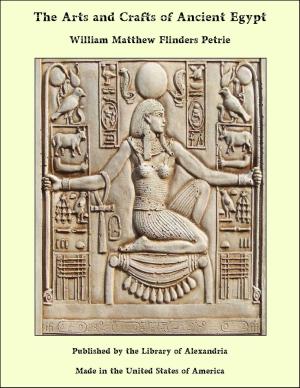Turkish Harems & Circassian Homes
Nonfiction, Religion & Spirituality, New Age, History, Fiction & Literature| Author: | Annie Jane Harvey | ISBN: | 9781613106198 |
| Publisher: | Library of Alexandria | Publication: | March 8, 2015 |
| Imprint: | Language: | English |
| Author: | Annie Jane Harvey |
| ISBN: | 9781613106198 |
| Publisher: | Library of Alexandria |
| Publication: | March 8, 2015 |
| Imprint: | |
| Language: | English |
Constantinople has been so often written about that it is useless to describe its lovely aspect in detail. Every one knows that there are minarets and towers rising up, in fairy-like grace, from amid gardens and cypress groves; but “he who would see it aright” should have his first view in all the bright unreality of a sunny summer morning. Soon after dawn, in the tender duskiness of the early hours, when the light steals down shyly from the veiled east, and before the business and noise of a great city begin, Constantinople is like the sleeping beauty in the wood. A great hush is over everything, broken only when the sun comes up in a blaze of light, flooding sea, earth, and city with a “glory” of life and colour. Then from each minaret is heard the voice of the muezzins, as they summon the faithful to prayers. The fairy-like caïques skim in every direction across the waters; and the beautifully-named but dirty and somewhat ugly Golden Horn is all astir with moving vessels. Nearly opposite the yacht was a very handsome building of white Greek marble, with an immense frontage to the sea. This is the Sultan’s palace of Dolmé-Batché. The wing on the right, where the windows are closely barred and jealously latticed, contains the apartments of the ladies of the Imperial harem. Behind the palace, stretching up the hill and crowning its summit, are seen the white, handsome houses that form the fashionable suburb of Pera. Here ambassadors and bankers have large, comfortable hotels; here, too, are the European shops, and the promenade for the Christian world. But the part to see—the part that interests—is, of course, the old Turkish quarter, Stamboul; for in Stamboul are Turks in turbans, and in Stamboul are real Turkish houses.
Constantinople has been so often written about that it is useless to describe its lovely aspect in detail. Every one knows that there are minarets and towers rising up, in fairy-like grace, from amid gardens and cypress groves; but “he who would see it aright” should have his first view in all the bright unreality of a sunny summer morning. Soon after dawn, in the tender duskiness of the early hours, when the light steals down shyly from the veiled east, and before the business and noise of a great city begin, Constantinople is like the sleeping beauty in the wood. A great hush is over everything, broken only when the sun comes up in a blaze of light, flooding sea, earth, and city with a “glory” of life and colour. Then from each minaret is heard the voice of the muezzins, as they summon the faithful to prayers. The fairy-like caïques skim in every direction across the waters; and the beautifully-named but dirty and somewhat ugly Golden Horn is all astir with moving vessels. Nearly opposite the yacht was a very handsome building of white Greek marble, with an immense frontage to the sea. This is the Sultan’s palace of Dolmé-Batché. The wing on the right, where the windows are closely barred and jealously latticed, contains the apartments of the ladies of the Imperial harem. Behind the palace, stretching up the hill and crowning its summit, are seen the white, handsome houses that form the fashionable suburb of Pera. Here ambassadors and bankers have large, comfortable hotels; here, too, are the European shops, and the promenade for the Christian world. But the part to see—the part that interests—is, of course, the old Turkish quarter, Stamboul; for in Stamboul are Turks in turbans, and in Stamboul are real Turkish houses.















